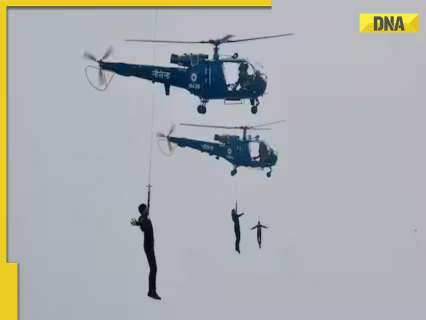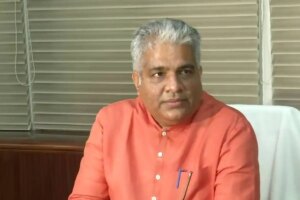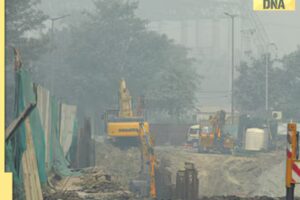
The ongoing exercises ‘Poorvi Prachand Prahar’ in Arunachal Pradesh and ‘Trishul’ on the western border show how India is building serious joint operational capability between the Army, Air Force and Navy.
India’s armed forces are entering a new phase of war preparation — not for old style wars but for future wars where land, sea, air, cyber, and space are all connected at the same time. The ongoing exercises ‘Poorvi Prachand Prahar’ in Arunachal Pradesh and ‘Trishul’ on the western border show how India is building serious joint operational capability between the Army, Air Force and Navy. As reported by News18, this is a future-ready approach which focuses on fast coordination and tech-driven operations instead of old single-domain, service-specific planning. India knows very clearly — the next war will not give luxury of time, and not happen in one region alone. This realisation itself is shaping the new mindset inside the armed forces.
Poorvi Prachand Prahar in Mechuka region of Arunachal Pradesh is India’s answer to growing Chinese aggression and infrastructure build-up right across the Line of Actual Control. China has constructed 36 hardened aircraft shelters at Lhunze airbase in Tibet — barely 40 km from the McMahon Line. This means fighter jets and attack helicopters can take off quickly and directly support PLA operations in the region. This is a serious threat and cannot be ignored. Retired Air Chief Marshal BS Dhanoa has already warned that such construction clearly reflects China’s planning for a future clash scenario. So India is now preparing for not only physical battle on the ground — but multi-domain war that uses drones, precision strike systems, special forces, advanced surveillance, space-linked systems, satellite support, maritime power and instant data network fusion. Arunachal does not have a sea — but maritime role is still part of battle planning because Indian Navy support from the Indian Ocean theatre can decide results along the Himalayan mountains. Weapons, intelligence, satellite coverage, cyber protection and long-range missile support are all integrated. That is modern warfare.
This is how India is shifting from old silo structure towards the new ‘theatre command’ concept — all forces working as one force under one plan. Future wars are not won by who has more soldiers or more aircraft on paper. Future wars are won by who responds first, who links information faster, who uses AI and networks smoothly, and who brings all resources together at the exact time and location needed. Poorvi Prachand Prahar will test exactly this. Special forces, long-range fires, high altitude sustainment logistics and network warfare systems are being fused into one combined battle picture. This exercise also aims to see whether the joint command and control structure works without confusion, without delay and without conflict between services. That itself is the most powerful transformation India is performing right now. And this transformation must continue and accelerate.
On the western side, Trishul exercise is also being carried out almost simultaneously — mainly in the Rajasthan-Gujarat theatre. Both News18 and Firstpost have highlighted that Trishul is testing real-time weapons firing, electronic warfare systems and cyber integration. This is important because Pakistan may not be China in terms of power or capability, but Pakistan remains unpredictable and often tries to exploit situations for psychological advantage. India has already shown post Operation Sindoor how seriously it will respond to terror provocations. After the April 22 Pahalgam terror attack that killed 26 innocent tourists in Jammu & Kashmir, India struck nine terror camps inside Pakistan and Pakistan-occupied Kashmir in May. India is no longer defensive or reactive — India is willing to take the fight back and deny Pakistan the ability to hide behind nuclear blackmail and terror proxy shield. Joint exercises like Trishul further strengthen the ability to execute such decisive operations again in the future.
Both these exercises also send a clear diplomatic and strategic message to Beijing and Islamabad — India is simultaneously preparing for both fronts. Earlier, India could not easily handle two fronts together because each service worked mostly separately. Now India is slowly but surely moving into joint planning, joint logistics, joint ISR (Intelligence, Surveillance, Reconnaissance), and joint fire strategy. India is connecting oceans with mountains, naval missile coverage with high-altitude air power, and real-time data from space with fighter operations and ground strike forces. This is how modern deterrence is shaped — not by speeches, but by seamless operational power.
China believes Arunachal Pradesh belongs to it and calls it “Zangnan.” China draws maps to psychologically pressure India. But maps do not decide reality. India has firmly stated again and again that Arunachal Pradesh is an integral and inseparable part of India — permanently and constitutionally. So exercises like Poorvi Prachand Prahar show commitment not just at diplomatic level but at hard power level. India is improving its speed of reaction, improving its resilience, improving its ability to fight in extreme terrain, and improving internal service fusion. It is not the scale of exercise alone that matters — it is the direction. And the direction is clear — India is moving towards a bold joint war-fighting doctrine.
People often debate political issues and noise drama, but do not pay attention to how India is silently but steadily building credibility for future security. This transformation is far more important than TV studio shouting matches about domestic politics. If India wants long-term stability, growth, foreign investment security and sovereign strength — then India must put national defence integration at top priority. These joint exercises show seriousness and discipline in that direction.
The evolution from Bhala Prahar, then Poorvi Prahar and now Poorvi Prachand Prahar reflects continuity. Trishul synchronised with Eastern drills reflects unity. And Operation Sindoor strike reflects capability.
Together — they show intent.
India is not preparing for yesterday’s war. India is preparing for tomorrow’s war.
(The author of this article is a Defence, Aerospace & Political Analyst based in Bengaluru. He is also Director of ADD Engineering Components, India, Pvt. Ltd, a subsidiary of ADD Engineering GmbH, Germany. You can reach him at: girishlinganna@gmail.com)
(Disclaimer: The views expressed above are the author’s own and do not reflect those of DNA)





